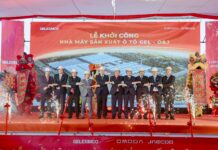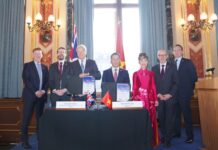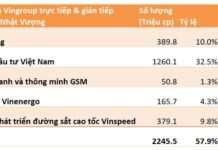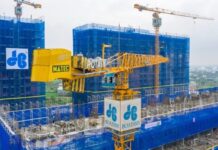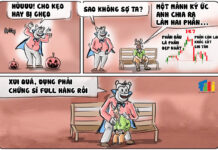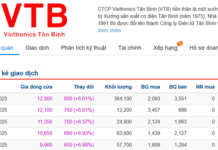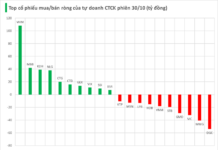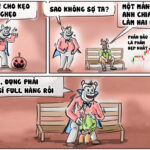Consumer Price Index in Ho Chi Minh City increased by only 0.04% in August. However, the inflation rate in the city reached 4.17% in the first eight months of 2025, compared to the national rate of 3.26%. The highest price increases were observed in healthcare (15.4%), education (7.84%), and housing and construction materials (7.4%).
Mr. Tran Phuoc Tuong attributed the city’s inflation rate as the highest in the country to these factors. However, if Ho Chi Minh City can stabilize the prices of these commodity groups, the CPI may remain at its current level or decrease slightly.
According to the city’s Statistics Office, exports in the first eight months of the year grew by 6.4%, lower than the national average of 14.8%.
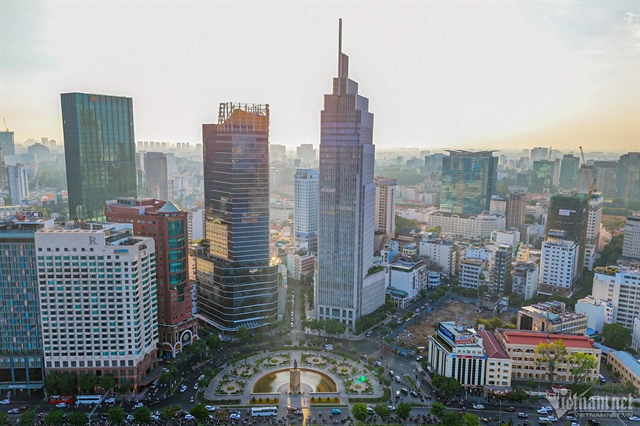
Ho Chi Minh City’s inflation rate is the highest in the country. Photo: Nguyen Hue |
Notably, in the first eight months, out of every 10 businesses entering the market, seven withdrew, compared to six in the same period last year.
The number of newly established enterprises in Ho Chi Minh City decreased by 13.9% in the first eight months, with a 35% decline in registered capital. The scale of businesses is also shrinking. Currently, the average capital scale is 6.1 billion VND per enterprise, significantly lower than the figure of 8.1 billion VND per enterprise in 2024.
On a positive note, capital mobilization in the area increased by 7% compared to the previous year. Credit growth also rose by 7.3%. It is estimated that 97% of mobilized capital is being lent out, indicating a robust flow of capital in the economy.
According to the city’s Statistics Office, to achieve the target of 8.5% GRDP growth for the whole of 2025, the city must attain a growth rate of over 10% in the fourth quarter, which presents a challenging task.
Tran Chung
– 21:47 09/09/2025
Unlocking the Traffic Jam: A New Approach to Ease Congestion on National Highway 13 and Pham Van Dong Street
“Traffic congestion continues to plague Ho Chi Minh City, with National Highway 13 and Pham Van Dong Street bearing the brunt of the issue. At a press conference held on the afternoon of September 11, Mr. Nguyen Kien Giang, Deputy Head of the Management, Maintenance, and Works Exploitation Department of the Ho Chi Minh City Construction Department, addressed the persistent traffic woes following the recent increase in the clearance height of Binh Trieu 1 Bridge.”
Title: US Tariff Hike: BRICS Nations Defiant in the Face of 50% Tax on Russian Oil Imports
“India asserts that the recent decline in Russian oil imports is merely a result of already-high inventory levels. With a strategic eye, India is ensuring its energy security by diversifying sources and managing stock levels, all while navigating the complex geopolitical landscape.”
“Electricity and Rent Prices Surge: What’s the Impact on Vietnam’s August CPI?”
The latest figures from the General Statistics Office on socio-economic development in August and the first eight months of 2025 reveal that out of the total increase in the CPI [Consumer Price Index] in August compared to the previous month, there were eight groups of goods and services that experienced a rise in their price index, while three groups witnessed a decrease.
The Island Cityscape: An Urban Oasis Adjacent to Sun Group’s 72,000 Billion VND Project, Witnessing Land Prices Soar Tenfold.
Kim Quy Island enjoys an exclusive location, offering both seclusion and convenience. Nestled amidst surrounding waters, it is also remarkably accessible, with major landmarks such as the Tan Van intersection, the Hiep Hoa urban area project, and the new Dong Nai Political-Administrative Center all within a 3 km radius.
“Land Conversion Premiums are Sky-High: HoREA Proposes Strict Regulations and Lower Fees”
The proposal put forward by HoREA suggests that the government implement a “strict regulation” regarding the reduction of land use fees when converting agricultural land to residential land. They recommend a flat rate of 20% within the land allocation limit and 30% for areas exceeding this limit.

